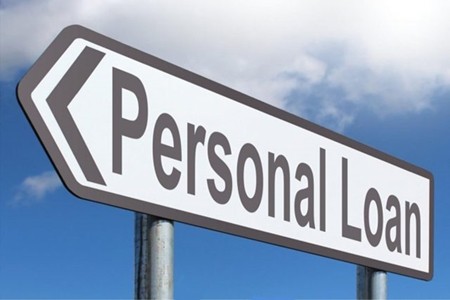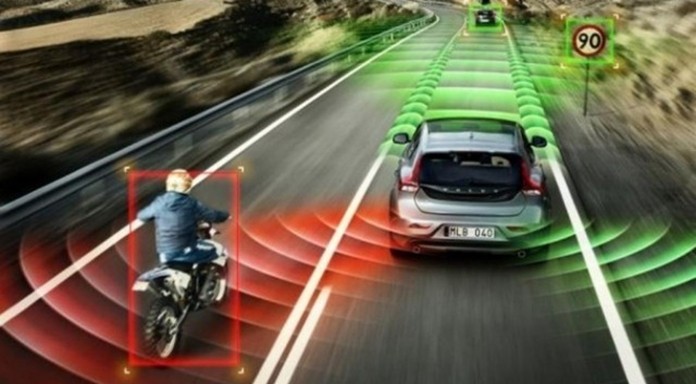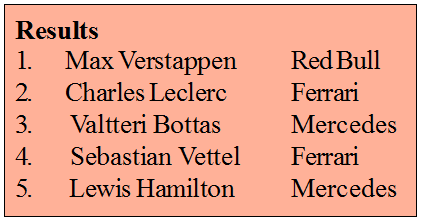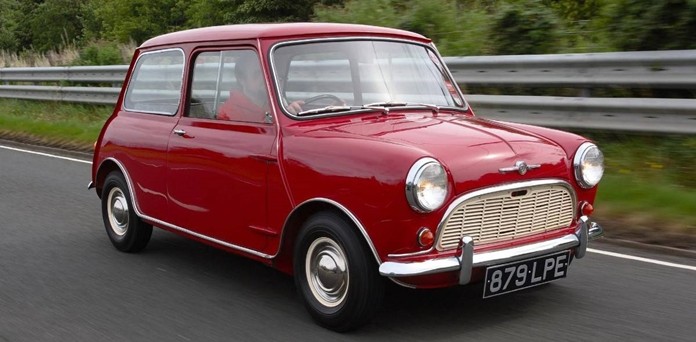
As the cost to own a new vehicle is rising, it’s more important than ever to consider what you’ll pay for a car loan and to shop for the best interest rate.
It is difficult to work out percentages used with loans in Thailand, but the following pointers can be looked at when you are in the marketplace.
The average new car loan interest rate reached 5.5% in 2018 in the UK, up about one percentage point from the previous year, according to Ben Bartosch, J.D. Power’s manager of forecast analytics. Meanwhile, a new car purchase price is going up, on average, he says. That means a buyer will pay thousands of baht in interest on a 60-month loan.
With the shift in the loan market, anyone looking to buy a car or refinance a loan needs smart strategies. Here are five things financial and automotive experts say will help you lock in financing that fits your budget.
- Check your credit rating
If you don’t know your credit score, you don’t know what interest rate you could qualify for. Additionally, if you find a problem on your credit report, you can fix it before entering the car-buying process. And, if you already have a loan, you may be able to refinance into a lower rate of payment if your credit is stronger than when you started the loan.
Your credit score is available from many personal finance websites, banks and credit card issuers.
- Shop around for the best rate
The loan-shopping process should start long before the car-buying process, Bartosch says. Calling around, or submitting online applications, could save you hundreds of dollars.
To compare loan offers, keep these terms the same:
Loan amount: In addition to the negotiated purchase price of the car, sales tax and fees will increase the amount you’ll need to borrow.
Down payment: The more you put down, the less you have to borrow, saving you money on interest and it might help qualify you for a better rate.
- Can you really afford it?
Experts recommend 60-month loans for new cars and 36 months for used vehicles.
Aim to spend no more than 10% of your take-home pay on your loan payment and less than 20% for total car expenses, which also includes gas, insurance, repairs and maintenance.
If you’re refinancing, extending your loan term can lower your monthly payment, but you may pay more in interest overall.
4 Look at pre-approval
Pre-approval can help you get the most competitive rate. Some shoppers coming in with preapproved loans from credit unions, but others, he says, are waiting for 0% financing from car manufacturers’ lending companies.
- Review the contract
While the loan contract is long and the verbiage is dense, it’s important to review it carefully before signing. Double-check the numbers. Mistakes (sometimes intentional) do happen. If the numbers don’t add up, make sure the lender hasn’t slipped in extra items you don’t want, like an extended warranty or gap insurance. And question any extra fees you weren’t told about initially or that other lenders don’t charge.
Are autonomous cars going to disrupt all our lives?
Stephen Rice and Scott Winter, of the Embry-Riddle Aeronautical University believe so, publishing their views in “The Conversation”, an independent and nonprofit source of news, analysis and commentary from academic experts.
Rice and Winter believe autonomous cars will change people’s travel habits not only around their own communities but across much larger distances. Their research has revealed just how much people’s travel preferences could shift, and found a new potential challenge to the airline industry.
Imagine someone who lives in Bangkok and needs to travel to Chiang Mai, for business. This is about a 10-hour drive. A flight takes about two hours, assuming no delays. Add to that the drive to the airport, checking in, the security line and waiting at the gate. Upon arrival in Chiang Mai it may take another 30 minutes to pick up any checked bags and find a rental car – and even more time to drive to the specific destination. The average person would estimate a total travel time of four to five fours as private car and plane.

However, if they could have a fully driverless car take them there, the choice changes. Passengers could eat, drink, work and sleep during the 10-hour drive. They could leave whenever they want, and pack whatever they want – including liquids and pocketknives – with no searches or scans. When they get to Chiang Mai they wouldn’t have to find a rental car and navigate to the actual place they’re going.
Which would you choose? Now imagine the self-driving car has a reclining seat with actual legroom, or even a bed. It’s more than a little tempting.
Experts in public opinion research says that the public loves how quickly flights can cover large distances, but hates the security checks, long lines, delays, risk of losing baggage and overall hassle of the flying experience.
We also know that at the moment, most people are reluctant to ride in driverless vehicles – including school buses and even ambulances that could speed their treatment in an emergency. However, our data also shows that as people learn about the benefits of driverless cars, they become more accepting of the new technology. Over time, people will feel comfortable using autonomous cars (and ambulances), just like they adjusted to riding in the first automobiles.
In their study, the data indicated that people preferred driverless vehicles over manual driving. Taking your own driverless car got even more attractive if people were told that after flying, they would need a rental car in their destination city.
On short trips, with a five-hour drive, two-thirds of people would rather drive themselves. That didn’t change much when they were offered a self-driving car, unless they were told they would need a car in their destination city. Then nearly three-quarters of people preferred a self-driving car to flying.
How will this affect the airlines?
Losing even one in 10 customers would substantially reduce airlines’ revenue. They don’t make much money on each flight as it is; less income would likely cause them to shrink their service, flying fewer routes less frequently.
These changes could substantially change the aviation industry, with airlines ordering fewer airplanes from manufacturers, airports seeing fewer daily flights and lower revenue from parking lots, and even airport hotels hosting fewer guests. The future of driverless cars is appealing to consumers – which means the future of commercial flight is in danger.
(I believe this article is a little too negative, but undoubtedly autonomous travel is in the future.)
What did we learn from Austria?
We learned that it is still possible to have excitement in F1, however the stewards still show their inability to make quick, sensible decisions.
At the previous Grand Prix, first across the line had been Ferrari’s Sebastian Vettel, however as he exceeded the track limits while dicing with Hamilton (Mercedes), he was penalized by 5 seconds being added to his time, effectively relegating him to second place. This time, with Leclerc (Ferrari) and Verstappen (Red Bull) dicing neck and neck, the Ferrari driver was forced to take an off-track excursion on the second last lap. After deliberating for a couple of hours, the stewards (this time) said no penalty.
There are far too many rules promulgated by the FIA and in attempting to appear even handed, just showed the nonsensical nature of the rule itself. Anyone who has raced a car (or go-kart) has been pushed off the track during a passing maneuver at some stage. The usual way to get past someone is to take the apex from him by sliding in underneath. The car being passed then either cedes the position on track, or runs out of road (off track). Ayrton Senna was very skilled in that procedure. “Give way or crash!”
Another ridiculous rule and attendant penalty was position in the grid box. Haas driver Magnussen even wound up with a drive-through penalty for being out of position at the start. “Out of position” was around 100 mm with his wheel on the line. A nonsensical application of a silly rule.
After Qualifying, the front row was all youngsters with Leclerc on pole and Verstappen alongside. The second row was all Mercedes with Bottas in front of Hamilton. It was not the World Champion’s day.
Mercedes finally had a genuine fight on their hands on two fronts, with both Ferrari and Red Bull looking the better race cars. Bottas looked to be coasting to a composed second, before losing out to Verstappen later on. Managing an overheating race car, the Finn didn’t put up too much of a fight. Hamilton fared worse after running wide over the kerbs and damaging his front wing. He pitted for a replacement which cost him places on track, and with similar heating issues, he lacked the speed to chase those ahead.
Meanwhile, way down in the field, but still showing lots of fight, Alex Albon said, “Unfortunately, we didn’t have the pace today, it was a tough first stint where we weren’t quick enough. We weren’t too bad in the second half of the race, but we lost too much time in the first stint. It’s a difficult one to swallow because our long runs were looking quite good on Friday, and that’s two races in a row where we’ve struggled with the balance of the car, so we need to figure out where we can improve.” A truer word never spoken.

The (real) Mini is 60
It is difficult to comprehend that Alec Issigonis’ Mini was first released in 1959, and I do make a difference between the BMC Mini and the BMW MINI (which of course it isn’t). However, BMW themselves prefer to use the name all in caps to make sure there is no confusion.
The BMC Mini went from drawing board to showroom floor in less than three years. In today’s computer age, manufacturers take five years as the industry standard.
To say the Mini was popular, was an understatement. Over its lifetime, they sold 5,387,062 and was the most formidable British car to influence the world marketplace.
I had a Mini 850 in 1960 and a 1275 GT in 1990. They were not perfect. They had some peculiar quirks, but they made motoring fun.

Natter Nosh and Noggin
The Pattaya Car Club will be meeting at Fletchers Folly (Siam Country Club Road, opposite Maxxis and 300 meter before the Mitkamol Chicken) Intersection on July 8. The club meets on the second Monday of the month (not every second Monday) and is a very relaxed get-together of folk with an interest in motor cars (and motorcycles). We have old car enthusiasts, motor racing enthusiasts, both as competitors and spectators, Formula 1 and even R/C airplanes. And you don’t need to drive a classic Mercedes, though we do have a couple in the club. Starting time 6.30-7 p.m.




